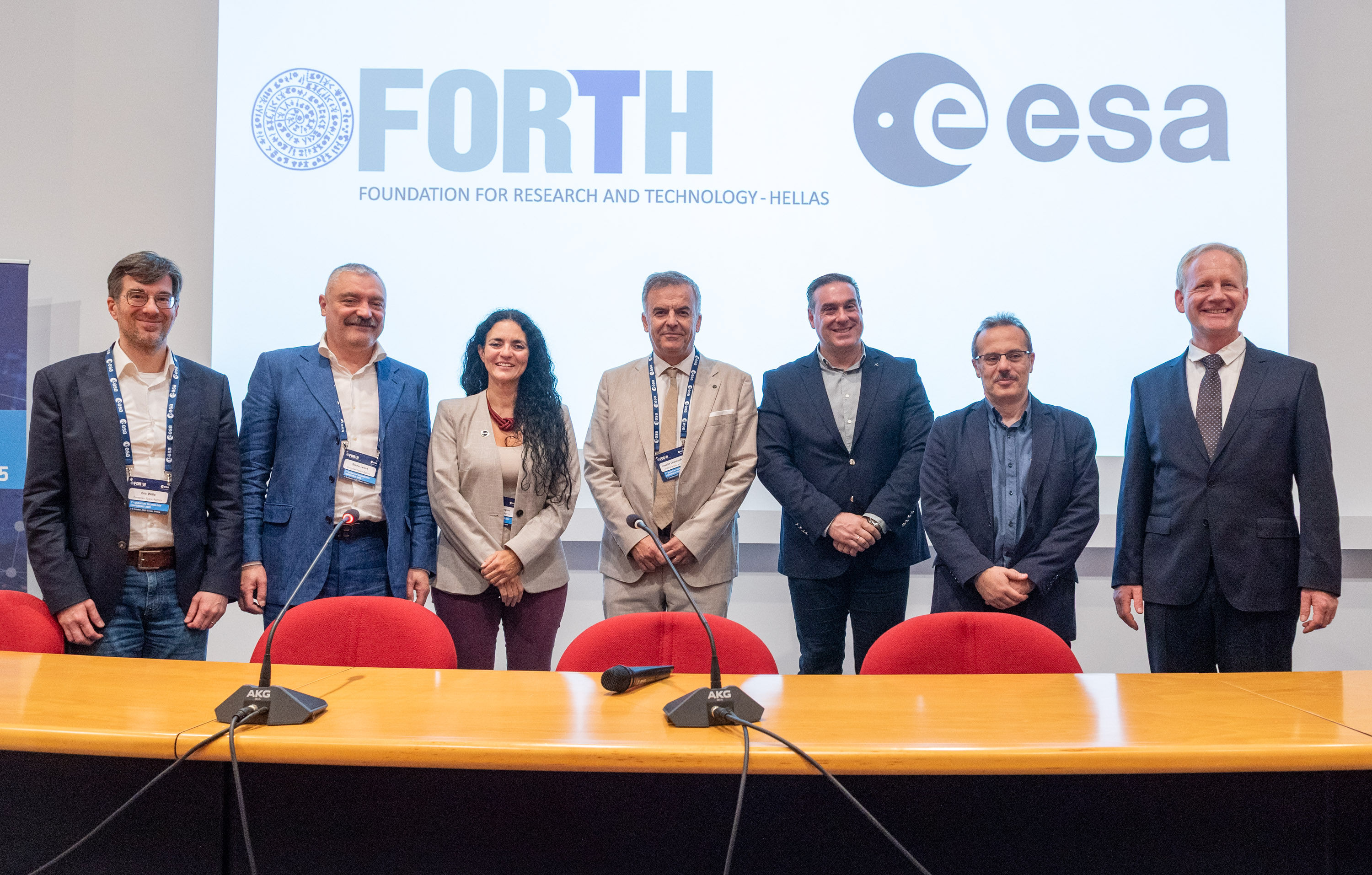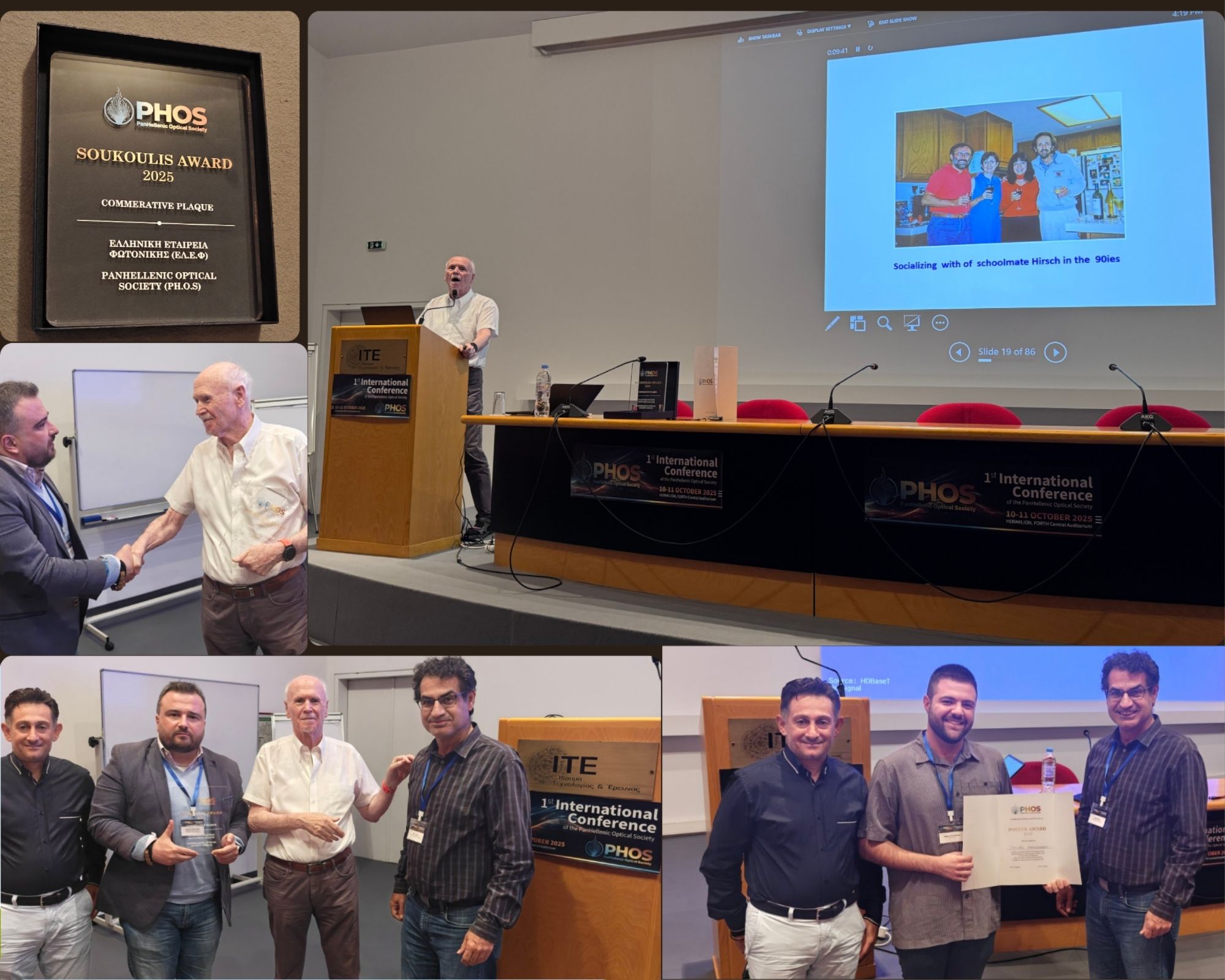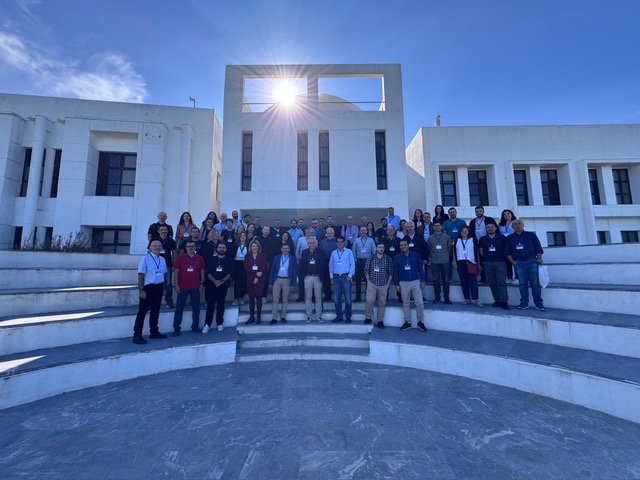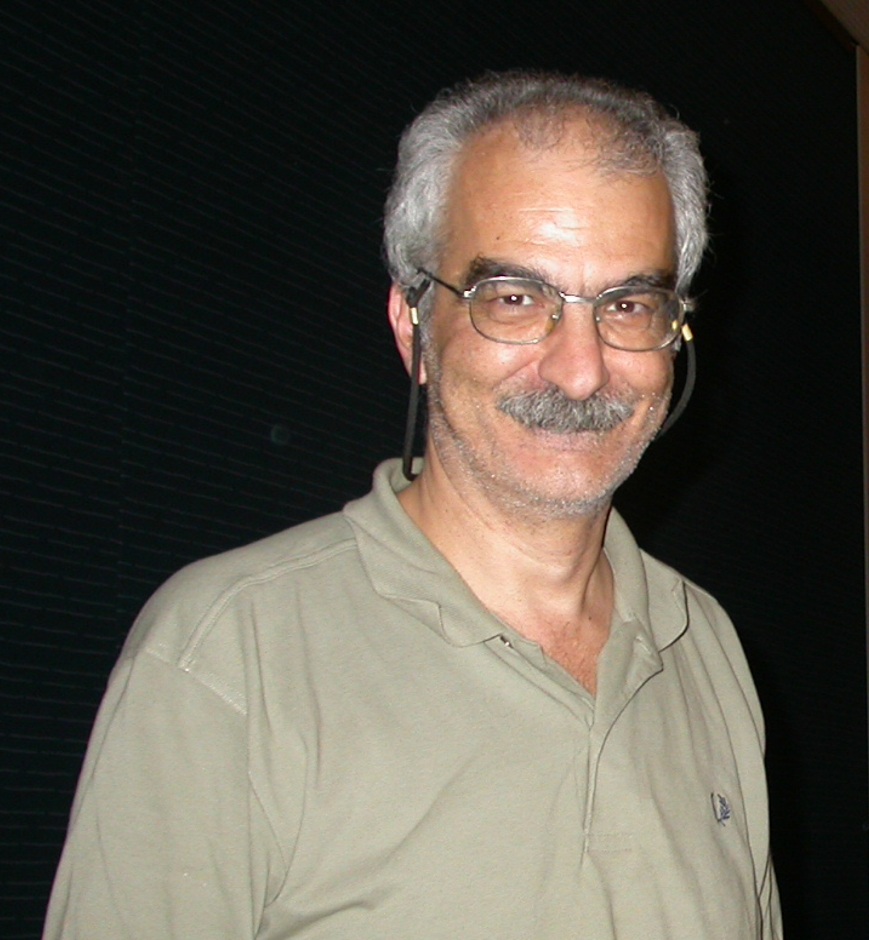

Laser-assisted cleaning has become an essential tool in cultural heritage conservation, offering unmatched precision, control, and environmental compatibility. Yet, the complexity of surface deposits and the fragile condition of historic materials demand continuous monitoring to ensure safe and effective restoration.
At the Institute of Electronic Structure & Laser (IESL) – FORTH, researchers are addressing these challenges by developing next-generation methodologies that bridge high-end technology with the specific needs of cultural heritage preservation.
Building on this commitment to innovation, we are proud to announce the publication of the latest breakthrough study of the Photonics for Heritage Science group (https://www.iesl.forth.gr/en/research/photonics-heritage-science [1], https://phohs.iesl.forth.gr/ [2]) at IESL - FORTH: “Machine learning assisted real-time acoustic monitoring of laser cleaning in Heritage conservation,” published in npj Heritage Science, part of the Nature Partner Journals (npj) Series. Authored by Georgios D. Barmparis, Kristalia Melessanaki, G. P. Tsironis, George Tserevelakis, and Paraskevi Pouli, in collaboration with A.- N. Raikidis (undergraduate student) from the Department of Physics at the University of Crete, this work represents a major step toward data-driven, intelligent restoration technologies.
This study marks the beginning of a new era in laser cleaning for Heritage conservation — the first feasibility study demonstrating how real-time acoustic monitoring, combined with explainable machine learning models, can guide conservators in making informed decisions during laser cleaning. By analyzing the acoustic signatures generated during the laser–material interaction, the method can identify the exact laser pulse that fully removes unwanted layers without risking damage to the original artwork or substrate.
This research opens a new chapter in heritage conservation — where advanced AI meets the delicate art of preserving cultural treasures. It sets the foundation for smart, reliable, and safe laser cleaning protocols that support conservators in their mission to protect and restore our shared cultural heritage.
Read the full article here: https://rdcu.be/eS3QR [3]
Πέρασαν κιόλας 40 ημέρες που η οικογένεια του ΙΗΔΛ έχασε έναν εξαιρετικό ερευνητή και αγαπητό συνάδελφο, τον Αντώνη Ανδριώτη, ο οποίος έφυγε από τη ζωή την 1.10.2025 στη Μυτιλήνη. Από τους πρώτους ερευνητές του ΙΗΔΛ και του ΙΤΕ, ο Ανδριώτης εντάχθηκε το 1989 στο δυναμικό του Ινστιτούτου, όπου υπηρέτησε αρχικώς ως Κύριος Ερευνητής και από το 2002 μέχρι την αφυπηρέτησή του, το 2014, ως Διευθυντής Ερευνών. Υπήρξε επιβλέπων σε 6 πτυχιακές εργασίες και σε 4 διδακτορικές διατριβές (Δ. Ζαχαριουδάκης, Ι. Παπαδόγγονας, Ζ. Φθενάκης, Ν. Λαθιωτάκης). Κατά την τελευταία δεκαετία παρέμεινε επιστημονικά ενεργός ως Ομότιμος Ερευνητής του Ινστιτούτου, δημοσιεύοντας επιστημονικά άρθρα μέχρι και τα μέσα του 2025. Παράλληλα με την ερευνητική του θέση στο ΙΗΔΛ, κατά την περίοδο 1990-97, δίδαξε ως επισκέπτης καθηγητής στο Τμήμα Φυσικής του Πανεπιστημίου Κρήτης, εισάγοντας δύο νέα προπτυχιακά μαθήματα Υπολογιστικής Φυσικής και ένα μεταπτυχιακό (με έμφαση στη Φυσική Στερεάς Κατάστασης) τα οποία ήταν πρωτοπόρα και μοναδικά για τα ελληνικά δεδομένα της εποχής. Συμμετείχε επίσης επί σειρά ετών ως διδάσκων στο Θερινό Σχολείο Προχωρημένης Φυσικής του Πανεπιστημίου Κρήτης ενώ περιοδικώς υπήρξε και συντονιστής του Σχολείου.
Γεννημένος στη Μυτιλήνη (23.09.1947), ο Ανδριώτης σπούδασε Φυσική στο ΕΚΠΑ και μετά την αποφοίτησή του (1970) συνέχισε τις σπουδές του στο Πανεπιστήμιο του Cape Town, απ’ όπου έλαβε το διδακτορικό το δίπλωμα το 1976. Το 1979, μετά από 28-μηνη στρατιωτική θητεία, εντάχθηκε στο ερευνητικό δυναμικό του Ινστιτούτου Θεωρητικής και Φυσικής Χημείας του Εθνικού Ιδρύματος Ερευνών (Αθήνα), όπου υπηρέτησε ως ερευνητής μέχρι το 1989 οπότε και μετακινήθηκε στην Κρήτη.
Το δημοσιευμένο ερευνητικό έργο του Αντώνη Ανδριώτη είναι πλούσιο και ευρέως αναγνωρισμένο, αριθμώντας άνω των 150 άρθρων σε έγκριτα επιστημονικά περιοδικά. Η έρευνά του εμπίπτει στην περιοχή της Θεωρητικής και Υπολογιστικής Φυσικής των Στερεών και η συμβολή του στο πεδίο εστιάστηκε κυρίως στην ανάπτυξη νέων θεωρητικών μεθόδων και υπολογιστικών μοντέλων [4] με στόχο τον προσδιορισμό και την κατανόηση ηλεκτρικών, μαγνητικών και οπτικών ιδιοτήτων μορίων και (νανο-) υλικών. Διατήρησε παραγωγικές ερευνητικές συνεργασίες με σημαντικές επιστημονικές ομάδες σε διάφορα πανεπιστήμια και ερευνητικά κέντρα. Ενδεικτικά αναφέρονται τα Univ. of Urbana-Champaign (USA), Imperial College of Science and Technology London (UK), Univ. of the Witwatersrand, Johannesburg (South Africa), Florida Atlantic Univ., Boca-Raton (USA), Univ. Claude Bernard Lyon 1, Lyon (F) και το Center of Computational Sciences, Univ. of Kentucky at Lexington (USA). Σημειώνεται ότι σε επίπεδο υποδομών, καταλυτική υπήρξε η συμβολή του Ανδριώτη στην ίδρυση του υπολογιστικού κέντρου στο ΙΗΔΛ, του οποίου διετέλεσε Διευθυντής κατά την περίοδο 1992-93.
Από το συγγραφικό του έργο διαφαίνεται το έντονο ενδιαφέρον του Ανδριώτη για τους φοιτητές και τους νέους ερευνητές, μέσω των δύο βιβλίων του Υπολογιστικής Φυσικής (1995, 1999) τα οποία συμπυκνώνουν το υλικό των διαλέξεων του στα μαθήματα που δίδαξε στο Φυσικό Τμήμα του Πανεπιστημίου Κρήτης. Έχει επίσης συγγράψει ένα βιβλίο με τίτλο «Ήμουν κι’ εγώ παρών κατά το Big-Bang. Η ευφυΐα της ενέργειας». Ξέχωρη όμως θέση στο έργο και την καρδιά του Ανδριώτη κατέχει ο Βενιαμίν ο Λέσβιος, εκπρόσωπος του Νεοελληνικού Διαφωτισμού. Η θεωρία του τελευταίου για το «Πανταχηκίνητο» αποτέλεσε θέμα μελέτης του Ανδριώτη, η οποία αναπτύσσεται στο βιβλίο του «Η Θεωρία του Πανταχηκινήτου του Βενιαμίν του Λεσβίου, Από τον αιθέρα των Καρτεσιανών στην παγκοσμιότητα και τον δυϊσμό των φαινομένων μεταφοράς της ενέργειας [5]» (2008). Το καλοκαίρι του 2024, ο Ανδριώτης οργάνωσε στο Πλωμάρι της Λέσβου το Διεθνές Συνέδριο «Βενιαμίν Λέσβιος (1759-1824), ο Φιλόσοφος, ο Φιλικός, ο Δάσκαλος του Γένους. 200 Χρόνια από τον Θάνατό του [6]», τα πρακτικά του οποίου πρόκειται να εκδοθούν από το Κέντρο Ερεύνης του Μεσαιωνικού και Νέου Ελληνισμού της Ακαδημίας Αθηνών.
Ο Αντώνης Ανδριώτης υπήρξε μια εμβληματική μορφή του ΙΗΔΛ, όχι μόνο χάρη στη σημαντική επιστημονική του συνεισφορά και την αφοσίωσή του στην έρευνα, αλλά και μέσα από την ανθρώπινη παρουσία του, που σημάδεψε με το ήθος, τη σεμνότητα και το ήρεμο πνεύμα του όλους εμάς που είχαμε την τιμή να συνεργαστούμε μαζί του. Υπήρξε ο πρώτος Ερευνητής που αφυπηρέτησε από το Ινστιτούτο μετά από 25 χρόνια προσφοράς, αφήνοντας πίσω του μια πορεία που εξακολουθεί να αποτελεί πηγή έμπνευσης και καθοδήγησης για τις νεότερες γενιές ερευνητών και συνεργατών.
Ο ίδιος ο Ανδριώτης έχει αφήσει την επιστημονική του πορεία και την περιγραφή του ερευνητικού και συγγραφικού του έργου στην προσωπική του ιστοσελίδα [7].
Researchers from IESL/FORTH, in collaboration with international partners from CEMES, LAAS, INSA, CNRS (France) and Universität Darmstadt (Germany), demonstrate that silicon nanoantennas can dramatically enhance the optical response of atomically thin semiconductors. By coupling monolayer MoS2 to resonant silicon nanostructures, they achieved up to a 30-fold enhancement in second-harmonic generation, together with significant increases in photoluminescence and Raman efficiencies. This study also disentangles the distinct physical origins of enhancement across different optical processes, paving the way for next-generation nanophotonic and quantum technologies.
Summary
The researchers reported that silicon-based dielectric nanoantennas offer an effective platform for engineering light–matter interactions in van der Waals semiconductors. They explained that they had demonstrated near-field coupling between monolayer MoS₂ and silicon nanoantennas arranged in hexagonal lattices with tunable geometric parameters, which led to a threefold enhancement in photoluminescence and an excitation-wavelength-dependent emission aligned with Mie-resonant modes. They added that Raman spectroscopy showed up to an eightfold enhancement in the vibrational modes of MoS₂, while second-harmonic generation exhibited a 20–30-fold increase in efficiency, closely linked to the presence of the nanoantennas. According to them, both experiments and simulations quantified the tunable advantages of the near-field interactions, considering thin-film interference and strain-induced effects. In conclusion, their study highlights the potential of dielectric nanoantennas as a key tool for advancing next-generation nanophotonic technologies.
Reference:
Katrisioti, D., Wiecha, P. R., Cuche, A., Psilodimitrakopoulos, S., Larrieu, G., Müller, J., ... & Paradisanos, I. (2025). Silicon nanoantennas for tailoring the optical properties of MoS2 monolayers, Appl. Phys. Lett., 127(18), 181101. doi: https://doi.org/10.1063/5.0284138 [8]
Collaborative research by FORTH’s QMM [9] Lab reveals that electron correlations drive coupled electronic and structural instabilities, central to superconducting multiorbital pairing.
In a new series of complementary experiments [1], scientists from the Institute of Electronic Structure and Laser (IESL) at FORTH [10] — Myrsini Kaitatzi, Alexandros Deltsidis, Izar Capel Berdiell, and Alexandros Lappas — working closely with collaborators from ALBA [11] (Laura Simonelli, Alexander Missyul), DESY [12] (Martin Etter), and BNL [13] & IPB [14] (Emil S. Bozin), explore a fundamental question at the forefront of condensed matter research: how strong must electron–electron interactions become to raise the temperature at which superconductivity appears?
Using brilliant synchrotron light sources, the researchers uncover previously hidden phases that shed new light on the delicate interplay between electronic orders — a key factor governing the behavior of quantum materials, and especially those where electrons move without resistance.
The team’s work highlights a novel two-dimensional (2D) iron-based material designed to conduct electricity without losses, offering promising pathways for energy-efficient systems and next-generation electronics that require less cooling than conventional superconductors. By combining intercalation chemistry for fine-tuning of material properties, X-ray total scattering for rigorous structural insights, and high-resolution core-level spectroscopies (XAS, XES) providing element-specific and ultrafast (femtosecond) local sensitivity, the researchers detect site-local fluctuations that signal an emerging electron-correlation–driven instability.
As the material cools, this instability manifests as an unconventional negative thermal expansion, arising from complex magnetic interactions. Within the Mott–Hund’s framework — which describes the balance between electron itinerancy and localization — orbital differentiation is shown to moderate electronic correlations and facilitate spin-fluctuation mediated interactions. Together, these mechanisms open new avenues for designing layered quantum materials in which superconductivity and magnetism can coexist and potentially reach elevated transition temperatures.
Reference
[1] A. Lappas, M. Kaitatzi, A. Deltsidis, I. Capel Berdiell, L. Simonelli, A. Missyul, M. Etter, and E.S. Bozin, “Orbital-Selective Instabilities and Spin Fluctuations at the Verge of Superconductivity in Interlayer-Expanded Iron Selenide”, Chemistry of Materials (2025).
DOI: https://doi.org/10.1021/acs.chemmater.5c01488 [15].

The Foundation for Research and Technology – Hellas (FORTH) proudly co-hosted the 7th International Quantum Technology Conference of the European Space Agency (ESA), held from October 7 to 9, 2025, at FORTH’s premises in Heraklion, Crete. This prestigious biennial event, considered a landmark in the field of quantum technologies for space applications, took place in Greece for the very first time.
The conference brings together leading experts and scientists from across Europe to explore the latest advances in quantum research and innovation. Each edition is hosted in a different European city, aiming to foster collaboration, showcase breakthroughs, and promote scientific excellence in the rapidly evolving domain of quantum technologies.
This year’s event focused on quantum technology applications in space, placing particular emphasis on new initiatives and international collaborations, goals of the quantum research community, emerging strategic challenges, technical advancements and breakthroughs, and opportunities for both commercial and institutional growth. The conference kicked off with welcome addresses from distinguished speakers: Dr. Josef Aschbacher, ESA Director General, Dr. Kyriaki Minoglou, Head of the Optics, Robotics & Life Sciences Division of ESA, and Prof. Vassilis Charmandaris, President of FORTH. The program featured eight keynote presentations by internationally renowned speakers from top universities and research centers, as well as over 150 participants from around the world.
In addition to the main sessions, the conference included guided tours of FORTH’s cutting-edge research laboratories at ICS, IA, and the Institute of Electronic Structure and Laser (IESL). IESL plays a crucial role in advancing the fundamental understanding of quantum physics and laser technologies that underpin quantum science. Its expertise bridges the gap between theoretical physics and practical quantum applications, particularly relevant to space technologies. Participants also visited the Skinakas Observatory in Anogeia, offering an immersive experience in both theoretical and applied quantum science.
ESA and FORTH: Advancing Quantum Research Through Strategic Collaboration
ESA, established in 1975 and comprising 23 member states, is dedicated to the peaceful exploration of space for the benefit of humanity. Through a robust network of specialized researchers, ESA coordinates space-related activities across Europe.
FORTH has established itself as a pivotal bridge between academic research and practical technological applications. With significant expertise in quantum sensors, optical systems, photonics, and computational technologies, FORTH has built a strong reputation for driving innovation. Its selection by ESA as co-organizer of this year's conference reflects its international standing and the critical role it plays in advancing technologies that are shaping the future of space exploration.
A major milestone of the event was the signing of a Memorandum of Intent (MoI) on Thursday, October 9, between FORTH and ESA. This agreement reinforces their shared commitment to deepening scientific and technological cooperation in areas such as quantum technologies, computing, astronomy, and astrophysics.
The MoI was signed by Prof. Vassilis Charmandaris, Chairman of the Board of Directors at FORTH, and Dr. Kyriaki Minoglou, Head of ESA’s Optics, Robotics & Life Sciences Division, on behalf of Dr. Dietmar Pilz, Director of Technology, Engineering & Quality at ESA.
The signing ceremony was attended by Dr. George Matalliotakis, Deputy Regional Governor for Liaison with Academic and Research Institutes, and Dr. Nikolaos Sergis, CEO of the Hellenic Space Center under the Ministry of Digital Governance. Both officials welcomed the initiative, expressing strong support and emphasizing the long-term strategic value of this collaboration for both scientific progress and national development.
A Path Forward for Innovation and Economic Growth
This agreement lays the foundation for dynamic joint ventures in space research and technology. It also signals new opportunities for Greece to position itself as a competitive force in the global quantum and space technology landscape. By strengthening the bridge between advanced research and its applications, the collaboration between ESA and FORTH is expected to not only foster innovation but also contribute significantly to the country’s economic and technological growth.

The 1st International Conference of the Panhellenic Optical Society (PHOS)
The 1st International Conference of the Panhellenic Optical Society (PHOS) was successfully held at FORTH, uniting leading scientists and emerging researchers from both Greece and around the world to delve into the latest advancements in photonics. The conference also marked the occasion of the Society’s inaugural General Assembly and Board Meeting.
At this landmark event, we had the great honor of welcoming Prof. Eleftherios Economou, Honorary President of FORTH, whose presence gave special significance to the conference. We warmly thank him for presenting the PHOS-Costas Soukoulis' Honorary Award to Prof. Kosmas Tsakmakidis, Assistant Professor at National and Kapodistrian University of Athens.
About Costas Soukoulis
Costas Soukoulis was an Associated Researcher at Institute of Electronic Structure and Laser (IESL) of Foundation for Research and Technology, Hellas (FORTH). He received his B.S. in Physics from Univ. of Athens in 1974. He obtained his doctoral degree in Physics from the Univ. of Chicago in 1978. From 1978 to 1981 he was visiting Assistant Professor at the Physics Dept. at Univ. of Virginia. He spent 3 years (1981-84) at Exxon Research and Engineering Co. and since 1984 has been at Iowa State Univ. (ISU) and Ames Laboratory. He has been an associated member of FORTH since 1983 and was a Professor (part time) at Dept. of Materials Science and Engineering at Univ. of Crete (2001-2011). He has courtesy appointments at the Departments of Materials Science and Engineering and Electrical and Computer Engineering at Iowa State University.
Prof. Soukoulis was Fellow of the American Physical Society, Optical Society of America, and American Association for the Advancement of Science. He received the ISU Outstanding Achievement in Research in 2001, and the senior Humboldt Research Award in 2002; He shared the Descartes award for collaborative research on left-handed materials in 2005; He won the 2014 Max Born Award of the Optical Society Of America. Prof. Soukoulis has been also a member or a chairman of various International Scientific Committees responsible for various International Conferences.
The Costas Soukoulis Honorary Award
In recognition of his lasting impact on photonics, the Soukoulis’ Honorary Award was established to honor outstanding young researchers who have made significant contributions to the field of Photonics. The award is presented by the newly established PanHellenic Optical Society (Greek Society for Photonics).
We would like to congratulate Prof. Kosmas Tsakmakidis on receiving this prestigious award, in recognition of his remarkable achievements and valuable contributions to the field of photonics. We also wish to extend our sincere gratitude to Prof. Eleftherios Economou for his heartfelt tribute to Costas Soukoulis, for announcing both the Costas Soukoulis Award and the Best Poster Award, and for his lifelong dedication to advancing Greek science and research.

The 1st International Conference of the Panhellenic Optical Society (PHOS) successfully concluded at FORTH, bringing together distinguished scientists and young researchers from Greece and abroad to explore new frontiers in photonics.
Heartfelt thanks to all speakers and participants for their inspiring presentations and valuable contributions, and to Prof. Nikos Pleros and Dr. Emmanuel Stratakis for their co-organization and vision that made this event possible.The conference also marked the foundation of the Panhellenic Optical Society (PHOS) — a new institution aiming to unite and strengthen the Greek scientific community in the field of photonics.
It was a great honor to welcome Prof. Eleftherios Economou, whose presence gave special significance to the conference. We warmly thank him for his lifelong contribution to Greek science and research.
Grateful to everyone who contributed to making PHOS 2025 a meaningful milestone for the progress of photonics in our country.
More information: https://phos.iesl.forth.gr/
ΠΡΟΚΗΡΥΞΗ ΔΙΕΝΕΡΓΕΙΑΣ ΕΚΛΟΓΩΝ
ΓΙΑ ΤΗΝ ΑΝΑΔΕΙΞΗ ΕΡΕΥΝΗΤΩΝ – ΜΕΛΩΝ ΤΗΣ ΕΙΔΙΚΗΣ ΕΠΙΤΡΟΠΗΣ ΚΡΙΤΩΝ
ΓΙΑ ΤΗΝ ΕΠΙΛΟΓΗ ΤΟΥ ΔΙΕΥΘΥΝΤΗ
ΤΟΥ ΙΝΣΤΙΤΟΥΤΟΥ ΗΛΕΚΤΡΟΝΙΚΗΣ ΔΟΜΗΣ ΚΑΙ ΛΕΪΖΕΡ ΤΟΥ ΙΤΕ
Το Διοικητικό Συμβούλιο του Ιδρύματος Τεχνολογίας και Έρευνας κατόπιν του, με Α.Π. 69231/9-9-2025, εγγράφου της Γενικής Γραμματείας Έρευνας και Καινοτομίας, αποφασίζει με την υπ’ αριθμ. πρακτικού 567/46-7/19.9.2025 την διενέργεια εκλογών, με μυστική ψηφοφορία, για την ανάδειξη δύο (2) Ερευνητών - μελών της ειδικής επιτροπής κριτών για την επιλογή Διευθυντή του Ινστιτούτου Ηλεκτρονικής Δομής και Λέιζερ (ΙΗΔΛ) του ΙΤΕ, και των αναπληρωτών τους, σε εφαρμογή της παραγράφου 10 εδαφ. β του άρθρου 16 του ν. 4310/2014 όπως αυτό αντικαταστάθηκε και ισχύει με την παρ. 7 του άρθρου 14 του ν. 4386/2016.
Βάσει των παραπάνω, το Ινστιτούτο Ηλεκτρονικής Δομής και Λέιζερ του ΙΤΕ προκηρύσσει τις εκλογές για την 30η Σεπτεμβρίου 2025, ημέρα Τρίτη, από 9 π.μ. έως 3 μ.μ. Οι εκλογές θα διεξαχθούν ψηφιακά με το ηλεκτρονικό σύστημα ψηφοφορίας ΖΕΥΣ. Η διαδικασία θα επικουρείται τεχνικά από τον κ. Εμμανουήλ Γιατρομανωλάκη με αναπληρωτή χειριστή τον κ. Βασίλη Κιρκίνη (απόφαση ΔΣ/ΙΤΕ 567/46-7/19.9.2025)
Δικαίωμα του εκλέγειν έχει το σύνολο του ερευνητικού προσωπικού (Ερευνητές και ΕΛΕ ανεξαρτήτως βαθμίδας) του Ινστιτούτου.
Δικαίωμα του εκλέγεσθαι έχουν οι Ερευνητές Α’ βαθμίδας του Ινστιτούτου.
Ως προθεσμία υποβολής δηλώσεων όσων ΔΕΝ επιθυμούν να είναι υποψήφιοι ορίζεται η 26η Σεπτεμβρίου 2025, ημέρα Παρασκευή, και ώρα 3 μ.μ. Οι δηλώσεις απευθύνονται προς την εφορευτική επιτροπή και υποβάλλονται ηλεκτρονικά, στην ηλεκτρονική διεύθυνση efe@iesl.forth.gr [16].
Ο ορισμός της εφορευτικής επιτροπής διενέργειας των εκλογών, θα πραγματοποιηθεί με δημόσια κλήρωση με την οποία θα επιλεγούν τρία (3) τακτικά και τρία (3) αναπληρωματικά μέλη από το σύνολο των Ερευνητών και ΕΛΕ του Ινστιτούτου. Η κλήρωση θα διεξαχθεί στο γραφείο Γ206 (προϊσταμένη γραμματείας ΙΗΔΛ) στον 1ο όροφο του κεντρικού κτηρίου του ΙΤΕ, την Τετάρτη 24 Σεπτεμβρίου 2025 και ώρα 10 π.μ.
Ηράκλειο 23 Σεπτεμβρίου 2025
Για το Ινστιτούτο Ηλεκτρονικής Δομής και Λέιζερ του ΙΤΕ
Αλέξανδρος Λάππας
Διευθυντής Ερευνών
Η προκήρυξη διενεργείται από τον υπογράφοντα βάσει της υπ’ αριθμ. πρακτικού απόφαση ΔΣ/ΙΤΕ 567/46-7/19.9.25 επειδή ο Αναπλ. Διευθυντής του Ινστιτούτου κωλύεται (υποψήφιος για την προκηρυχθείσα θέση).
Άρθρο 14 παρ. 4 Ν. 4386/16 (τροποποίηση άρθρου 16, παρ. 7 Ν. 4314/14).
We are proud to announce that the research article entitled “Impact of vibrational strong coupling on liquid–liquid phase separation in supramolecular polymers”, published by the Institute of Electronic Structure and Laser, FO.R.T.H, in collaboration with the Institute for Complex Molecular Systems, Laboratory of Macromolecular and Organic Chemistry, Eindhoven University of Technology, the Department of Materials Science and Engineering, Department of Chemistry, Research Center for Industries of the Future, Westlake University, the Max Planck Institute for Polymer Research, the School of Material Science and Engineering, Zhejiang University, and the Faculty of Physics, Adam Mickiewicz University, Uniwersytetu Poznanskiego, has been selected as the Pick-of the week by the journal Chemical Science (The flagship journal of the Royal Society of Chemistry). Furthermore, the article has also been included in several prestigious themed collections: 15th Anniversary: Chemical Science community collection (2025) and Chemical Science HOT Article Collection (2025).
Summary
Most of us think of empty space as truly empty, but it is not. It’s buzzing with tiny, invisible energy ripples called vacuum fluctuations. These fluctuations are bursts where particles briefly pop in and out of existence. Trapping light in a special environment so that it strongly interacts with matter- known as ‘light-matter strong coupling’ - can reshape the way chemical reactions happen. Our study explores how this concept applies to liquid–liquid phase separation - a type of molecular “sorting” in which a solution splits into two distinct liquid phases. Last year, we discovered that the growth of supramolecular fibers can entropically trigger this separation. Now, we demonstrate that by placing this system in an optical cavity (Fig.), the light–matter strong coupling controls the process, without the addition of chemicals, real photons or changing temperature or pressure. It does this by changing the system’s energy landscape, making it harder for fibers to form. Our high-resolution microscopy images reveal that droplets (tactoids) appear more slowly in the cavity. In situ scattering experiments confirm that the reason is simple but powerful: the coupling itself suppresses fiber formation. This finding is more than a laboratory curiosity as it also tells us about strong coupling favoring of water clusters or oligomers instead of supramolecular polymerization. By demonstrating that light–matter strong coupling can steer self-assembly processes, we open the door to new ways of designing materials and medicines. Imagine smart biomaterials that respond to different resonant optical modes (even in ‘dark’) instead of chemical triggers, or therapies where delicate biological processes are controlled without invasive interventions.
MPIP researchers, Profs. George Fytas , Werner Steffen and Bert Meijer, in collaboration with Drs. K. Joseph and H. Fu of Prof. E.W. Meijer’s group in the Institute for Complex Molecular Systems, Eindhoven University of Technology, The Netherlands, demonstrate that light-matter strong coupling can reshape the energy landscape of supramolecular polymerization, thereby slowing down liquid-liquid phase separation in supramolecular fibrils.
Publication link: https://doi.org/10.1039/D5SC04149J [17]
Prof. G. Fytas Group: https://sites.mpip-mainz.mpg.de/erc-smartphon [18]

Σε κλίμα βαθιάς συγκίνησης, την Πέμπτη, 31 Ιουλίου 2025, πραγματοποιήθηκε μονοήμερη εκδήλωση μνήμης προς τιμήν του εξαίρετου και πολυαγαπημένου συναδέλφου και φίλου μας, Κώστα Καλπούζου (https://beaver.iesl.forth.gr/ [19]), κατόπιν πρότασης του Επιστημονικού Συμβουλίου.
Ο Κώστας Καλπούζος σπούδασε στο Πανεπιστήμιο του Τορόντο Καναδά, από όπου έλαβε πτυχίο BASc από το τμήμα Εφαρμοσμένης Επιστήμης και Μηχανικών το 1975, πτυχίο BSc από το τμήμα Χημείας το 1978, μεταπτυχιακό πτυχίο ΜSc από το τμήμα Χημείας το 1981 και Διδακτορικό τίτλο (PhD) από το τμήμα Φυσικής το 1987. Τα έτη 1988-1990 εργάστηκε ως επιστημονικός συνεργάτης του ίδιου Πανεπιστημίου και της εταιρίας M.P.B. Technologies Inc., με υποτροφία του National Research Council of Canada.
Το 1990 επέστρεψε στην Ελλάδα και έως το 1992 εργάστηκε ως συμβασιούχος διδάσκων στο τμήμα Φυσικής του Πανεπιστημίου Κρήτης. Επί σειρά ετών, συνέχισε να προσφέρει εθελοντικά διδακτικό έργο και συν-επίβλεψε μία διδακτορική διατριβή. Το 1993 προσελήφθη στο ΙΤΕ-ΙΗΔΛ. Το 1995 εξελέγη ως Ειδικός Λειτουργικός Επιστήμονας Β’ βαθμίδας και το 1999 προήχθη στην Α’ βαθμίδα. Το έργο του, μεταξύ άλλων, περιλάμβανε την ανάπτυξη συστήματος laser οργανικής χρωστικής υπερβραχέων παλμών καθώς και την εγκατάσταση και λειτουργία συστήματος ενισχυτή λέιζερ υπερβραχέων παλμών και σταθμού εργασίας pump-probe μετρήσεων υπερταχέων δυναμικών φαινομένων. Σε ερευνητικό επίπεδο, εργάστηκε σε θέματα υπερταχείας δυναμικής ηλεκτρονίων σε στερεά σώματα και νανοϋλικά, στη επεξεργασία και νανοδόμηση επιφανειών με laser και στην επιστήμη και τεχνολογία αττοδευτερολέπτων.
Ο Κώστας Καλπούζος υπήρξε ακούραστος σύμβουλος, καθοδηγητής και συμπαραστάτης για φοιτητές, μεταδιδακτορικούς, ερευνητές, μέλη ΔΕΠ και διοικητικά στελέχη. Διαδραμάτισε κεντρικό ρόλο σε διοικητικά θέματα του ΙΗΔΛ και στη διαμόρφωση και λειτουργία της ομάδας λέιζερ, ασκώντας στην πράξη καθήκοντα διευθύνοντος συμβούλου. Η συνολική συμβολή του στη διοικητική οργάνωση του ΙΗΔΛ υπήρξε καθοριστική καθώς με τη βαθιά επιστημονική του κατάρτιση και την αφοσίωση του, συνέβαλε ουσιαστικά στη διαμόρφωση της φυσιογνωμίας του ινστιτούτου, αφήνοντας ένα ανεξίτηλο αποτύπωμα στην πορεία του.
Η εκδήλωση πραγματοποιήθηκε στην αίθουσα “Κώστας Φωτάκης” στο κεντρικό κτίριο του ΙΤΕ στις Βούτες Ηρακλείου περιλάμβανε επιστημονικές ομιλίες και διηγήσεις προσωπικών αναμνήσεων από συνεργάτες και φίλους του Κώστα.